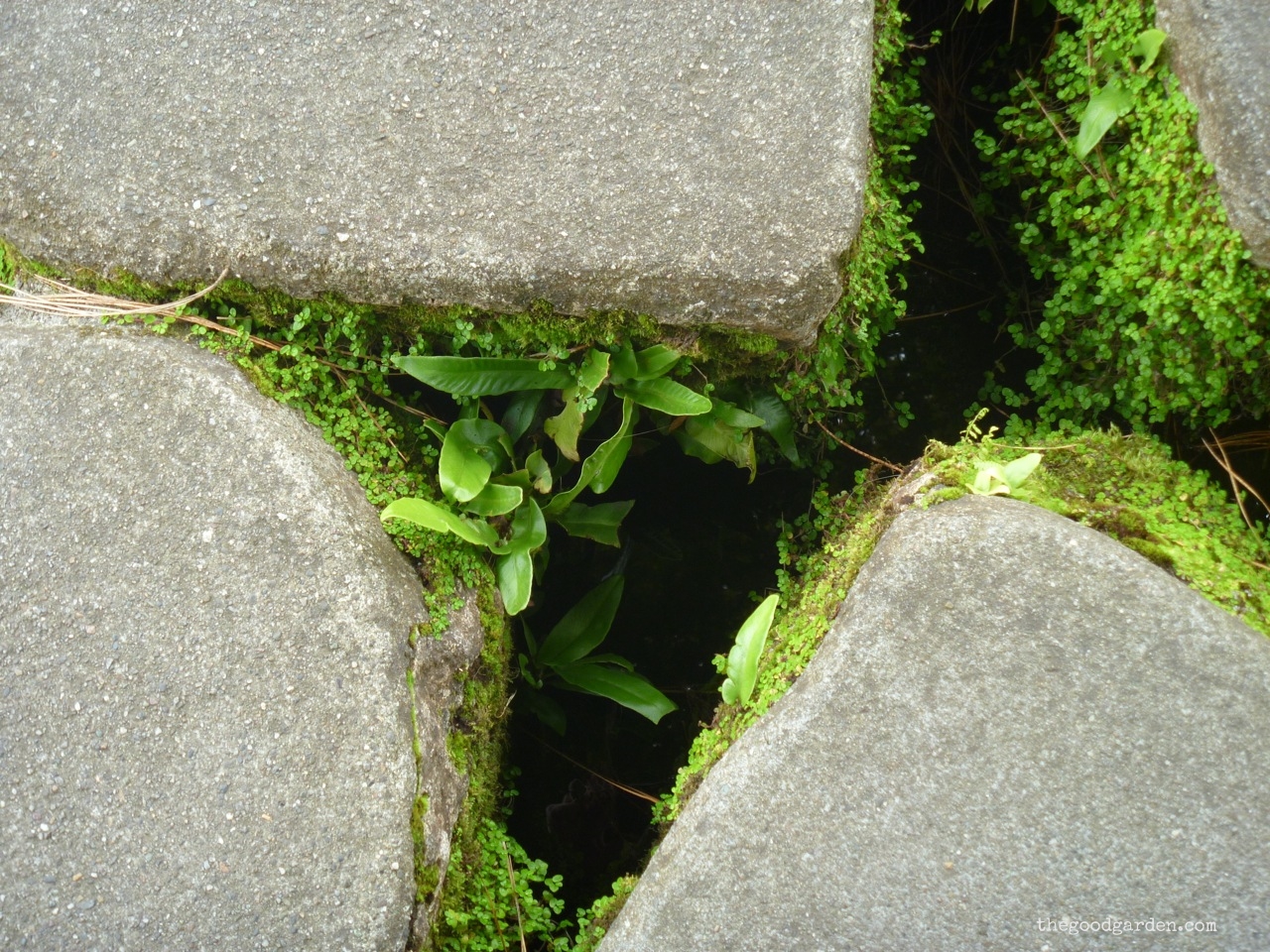Line, form, texture, scale, balance, emphasis, and repetition are critical to create beautiful garden spaces. Together these are the building blocks toward a unified design and need to be chosen carefully for a design to feel right.
However, during my recent trip to San Francisco’s Japanese Tea Garden, I was struck by the importance of small details in good garden spaces. These don’t hit you over the head at first; they often go completely unnoticed. I believe that even if we only absorb them sub-consciously, these details create magic in the garden, making the ordinary extraordinary.
One great example of this for me is the series of stepping stones that cross the small stream pictured above.
On one level, the stones are just a way to cross from one part of the garden to another.
At closer inspection, these are gardens unto themselves, full of mosses and ferns; miniature gardens in the midst of a larger space. And there is something powerful in the contrasting layers: the hard, smooth top of the stone honed by unforgiving foot traffic; the dark waters of the stream below; and in the impossibly small middle space a lush green garden.
This Japanese Tea garden is the oldest Japanese public garden in the US. Japan was only opened to the West in 1853 and by the turn of the century all things Japanese were popular. This garden is one example. In an effort to introduce Americans to Japanese culture, the 1894 San Francisco California Midwinter International Exposition included a Japanese Village exhibit.
Landscape architect Makoto Hagiwara expanded this work into a 5-acre garden and his family worked on the garden until 1942. At that point, the family was forced to leave their home for an internment camp in Utah. During the war the garden was renamed the Oriental Garden and many of the elements Hagiwara introduced were lost. In 1952 the name reverted back to the Japanese Tea Garden.
Balance, harmony, form, texture are important for sure. But let’s not forget to appreciate the small details that make a good garden great.
See more Japanese garden stories here.








